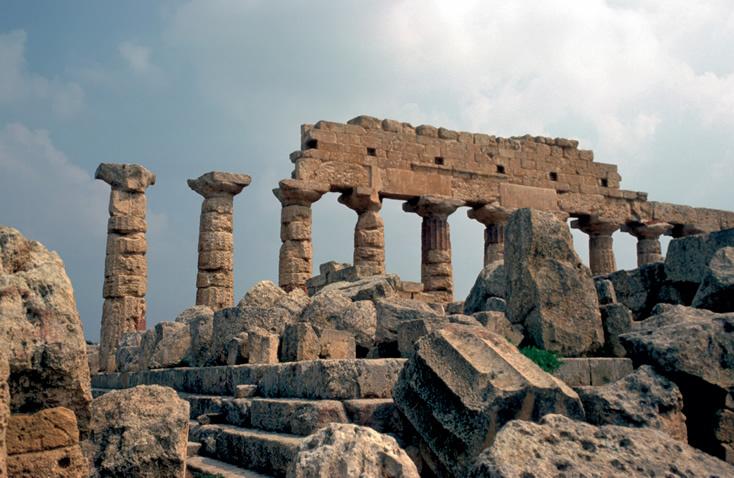When we think of ancient Greek architecture, what we tend to imagine are stately fluted columns flanking immense buildings. The columns, in fact, are the key indications of what organizational style is being used in the architecture, particularly, among their temples and sanctuaries. Here, we contrast two major orders in stone: those of Doric and Ionic. Where were these styles adapted?
The distinctions between "Doric" and "Ionic" began to emerge at 7th-century BC Thermon and Samos. They become increasingly divergent during the Archaic period (c. 600-480 BC).
The Doric Order...
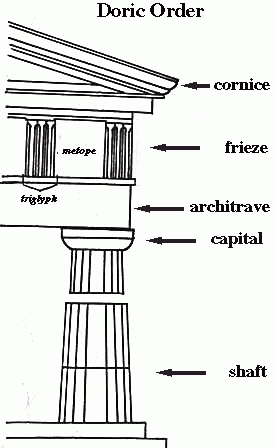
The Doric order was the first to appear, prized among Western and mainland Greeks for its austere and simplistic look and inspired by Egyptian and Mycenaean styles. There are no elaborations. The columns stand directly on the stylobate, without any base. The shafts are thicker than those of the Ionic, though wider at the bottom; they are often built in the manner of entasis, which is an optical effect of curving the columns to make them appear more substantial. The capitals of its columns are in two parts: the abacus, which is a flat slab, and the echinus, which is a type of molding. Above its capital are the architrave, the frieze, and the cornice. Upon its friezes, we see that the exteriors of Doric order-temples bear alternating triglyphs and metopes. Doric temples are characterized by the presence of the opisthedomos, a "back porch," as seen below.
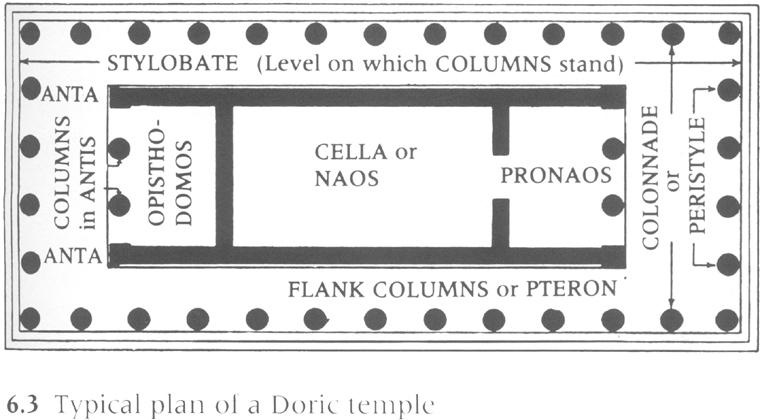
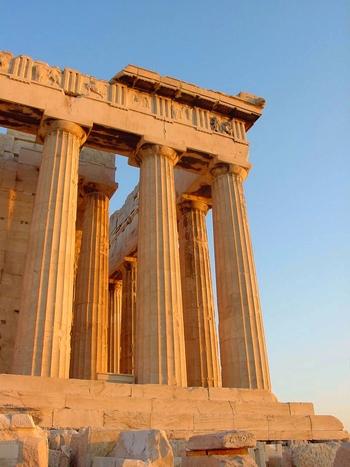
The Ionic Order...
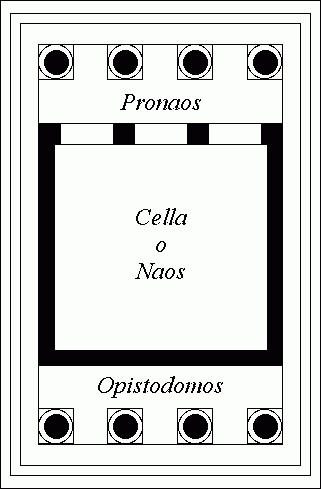
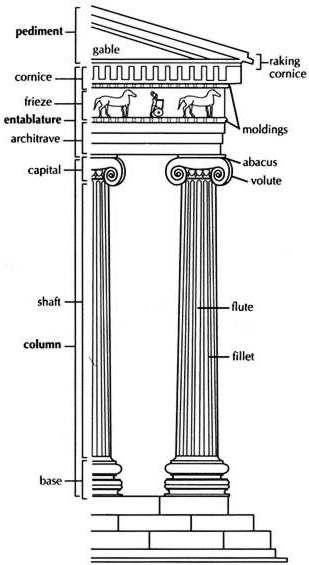
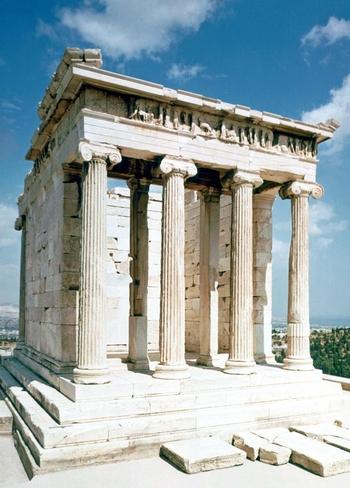
Mixed Orders...
The Doric and Ionic styles have not always been strictly interpreted as an East/West contrast. The dwellers of Magna Graecia-- "Greater Greece," referring to post-colonization societies in the coastal areas of Southern Italty-- often mixed and matched aspects of both the Doric and Ionic orders into more regional styles.
